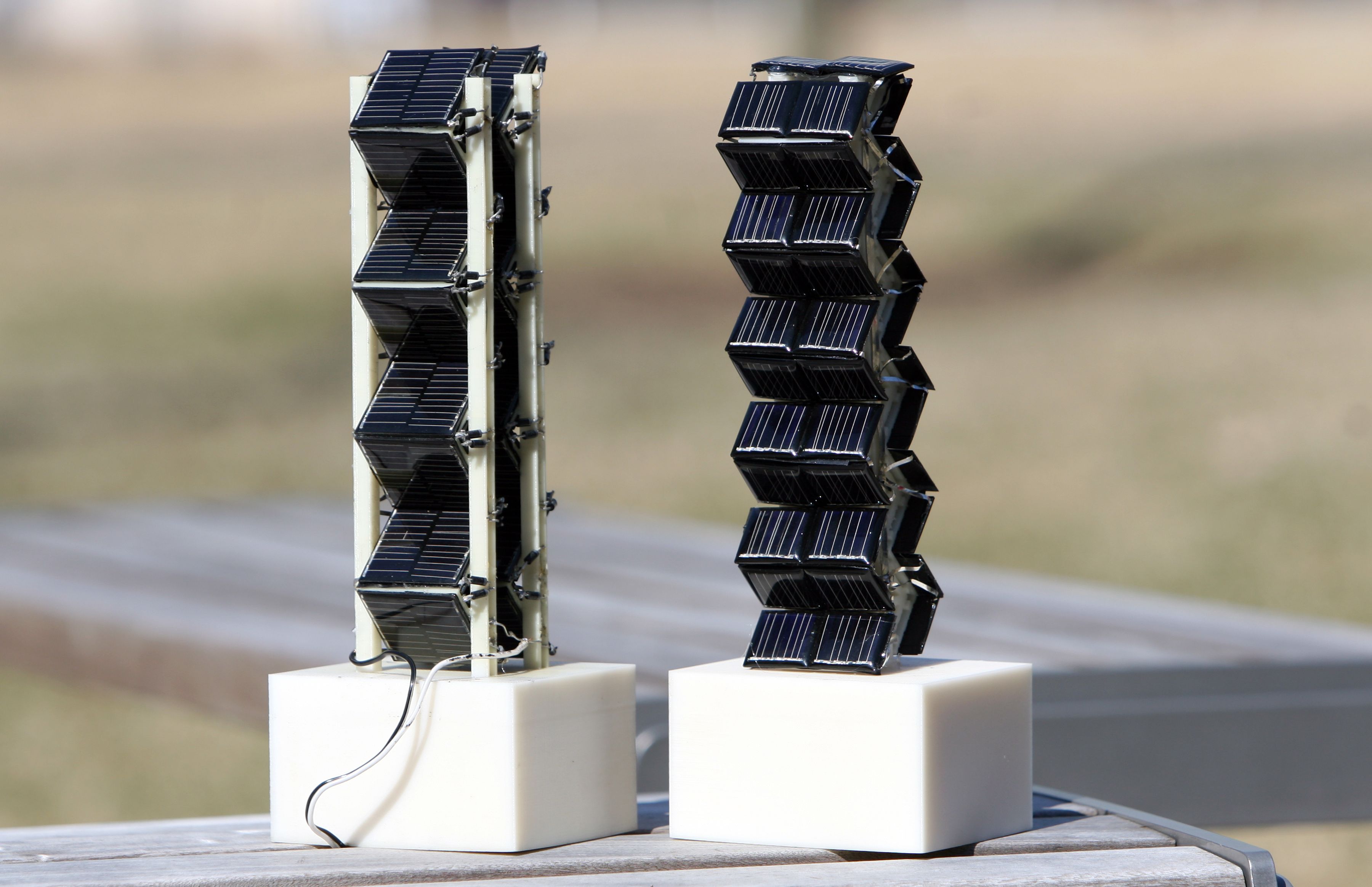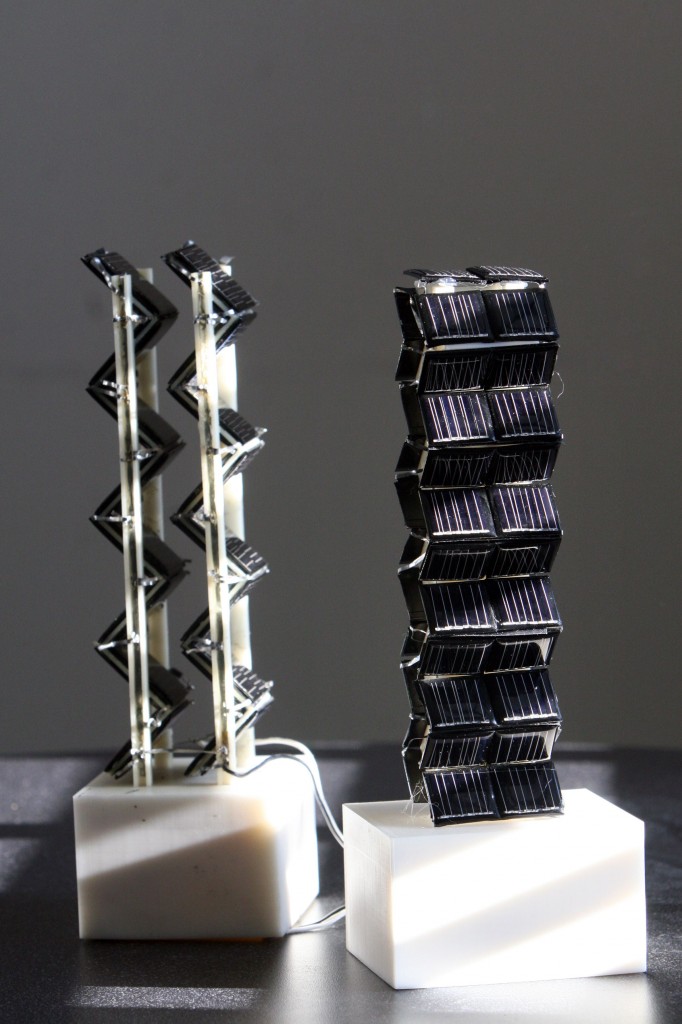3-D Solar. Up to 20x more power than flat panels.
Numerous companies - 1366, Bandgap, Twin Creeks, and more - are striving to optimize solar cell efficiency or manufacturing to bring down solar costs. Regardless of the innovative process, the end-result is generally the same: a flat panel that is fixed on a rooftop or other surface.
A team of researchers at MIT is considering a different approach -- and thinking more like the cinema industry as of late:
The MIT team has modeled a wide variety of three-dimensional configurations with results showing improvements of double to up to 20x more power generated than conventional panels for a given area.
The vertical surfaces of the 3-D towers allow to collect more sunlight during mornings and evenings -- and the 3-D structures are especially productive in unfavorable conditions for solar power - cloudy days, winter months, and locations far from the equator.
The accordion-like tower, the team's latest and tallest structure, is designed not only for performance but also for shipping - the idea is to ship the tower flat and unfold it at the site of installation.
Though 3-D is considerably more expensive than 2-D, requiring many more solar modules, the MIT team claims the costs are offset by the increased efficiency. Moreover, Professor Jeffrey Grossman notes that "the cost for silicon cells is a fraction of the total cost, a trend that will continue downward in the near future". Today, up to 65% of the price of solar are costs associated with "post-manufacturing" costs including installation, permits, and other components.
The MIT team has achieved an impressive first step with their successful modeling of individual 3-D structures. The next step is to study a collection of towers and the impact of their shadows on each other. And eventually, the team must demonstrate the commercial viability of 3-D solar structures.
I foresee a spinoff startup in the near future...


